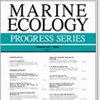Plasticity and overlap of trophic niches in tropical breeding Laridae
IF 2.1
3区 环境科学与生态学
Q2 ECOLOGY
引用次数: 0
Abstract
ABSTRACT: Trophic ecology of seabirds in tropical regions remains poorly understood despite the large number of multispecies breeding colonies supported by these ecosystems. Here, we used the isotopic niche (δ15N and δ13C) of 5 Laridae species at 2 breeding areas in Cuba to analyze the plasticity and interspecific overlap of trophic niche determined from chick down and feather samples. The down samples reflected the female trophic regime before laying, while the feather samples incorporated the trophic regime of the chicks provided by the parents during rearing. Two main species groups were identified by their isotopic niche characteristics: species with small and quite stable isotopic niches (trophic specialists) and species with large and highly variable isotopic niches (trophic generalists). Laughing gull Leucophaeus atricilla, royal tern Thalasseus maximus, and sandwich tern T. sandvicensis were the generalists and showed significant isotopic niche differences between breeding areas and phases. Bridled tern Onychoprion anaethetus and roseate tern Sterna dougallii were trophic specialists, but only the former exhibited significant variations in isotopic niche breadth between breeding phases. Overall, trophic (inferred from isotopic) niche overlap was relatively low, suggesting that these tropical seabirds reduce competition through niche partitioning. We concluded that trophic niche plasticity and segregation appear to constitute an important adaptive strategy to ensure the breeding success of sympatrically breeding Laridae in north-central Cuba.热带繁殖鸻科鸟类营养龛的可塑性和重叠性
摘要:热带地区海鸟的营养生态学仍然鲜为人知,尽管这些生态系统支持着大量的多物种繁殖地。在此,我们利用古巴 2 个繁殖区 5 种鸻科鸟类的同位素生态位(δ15N 和 δ13C),分析了从雏鸟绒毛和羽毛样本确定的营养生态位的可塑性和种间重叠。绒毛样本反映了雌鸟产卵前的营养系统,而羽毛样本则包含了亲鸟在育雏期间提供的雏鸟营养系统。通过同位素生态位特征确定了两个主要物种组:同位素生态位小且相当稳定的物种(营养专家)和同位素生态位大且变化很大的物种(营养通才)。笑鸥(Leucophaeus atricilla)、皇家燕鸥(Thalasseus maximus)和夹沙燕鸥(T. sandvicensis)是营养通才,在不同的繁殖区域和阶段表现出显著的同位素生态位差异。马鞍燕鸥(Onychoprion anaethetus)和红燕鸥(Sterna dougallii)是营养专家,但只有前者在不同繁殖期的同位素生态位广度有显著差异。总体而言,营养(根据同位素推断)生态位重叠率相对较低,这表明这些热带海鸟通过生态位分配减少了竞争。我们的结论是,营养生态位的可塑性和隔离似乎是确保古巴中北部同域繁殖的杓鹬繁殖成功的重要适应策略。
本文章由计算机程序翻译,如有差异,请以英文原文为准。
求助全文
约1分钟内获得全文
求助全文
来源期刊

Marine Ecology Progress Series
环境科学-海洋学
CiteScore
5.30
自引率
8.00%
发文量
238
审稿时长
3 months
期刊介绍:
The leading journal in its field, MEPS covers all aspects of marine ecology, fundamental and applied. Topics covered include microbiology, botany, zoology, ecosystem research, biological oceanography, ecological aspects of fisheries and aquaculture, pollution, environmental protection, conservation, and resource management.
 求助内容:
求助内容: 应助结果提醒方式:
应助结果提醒方式:


